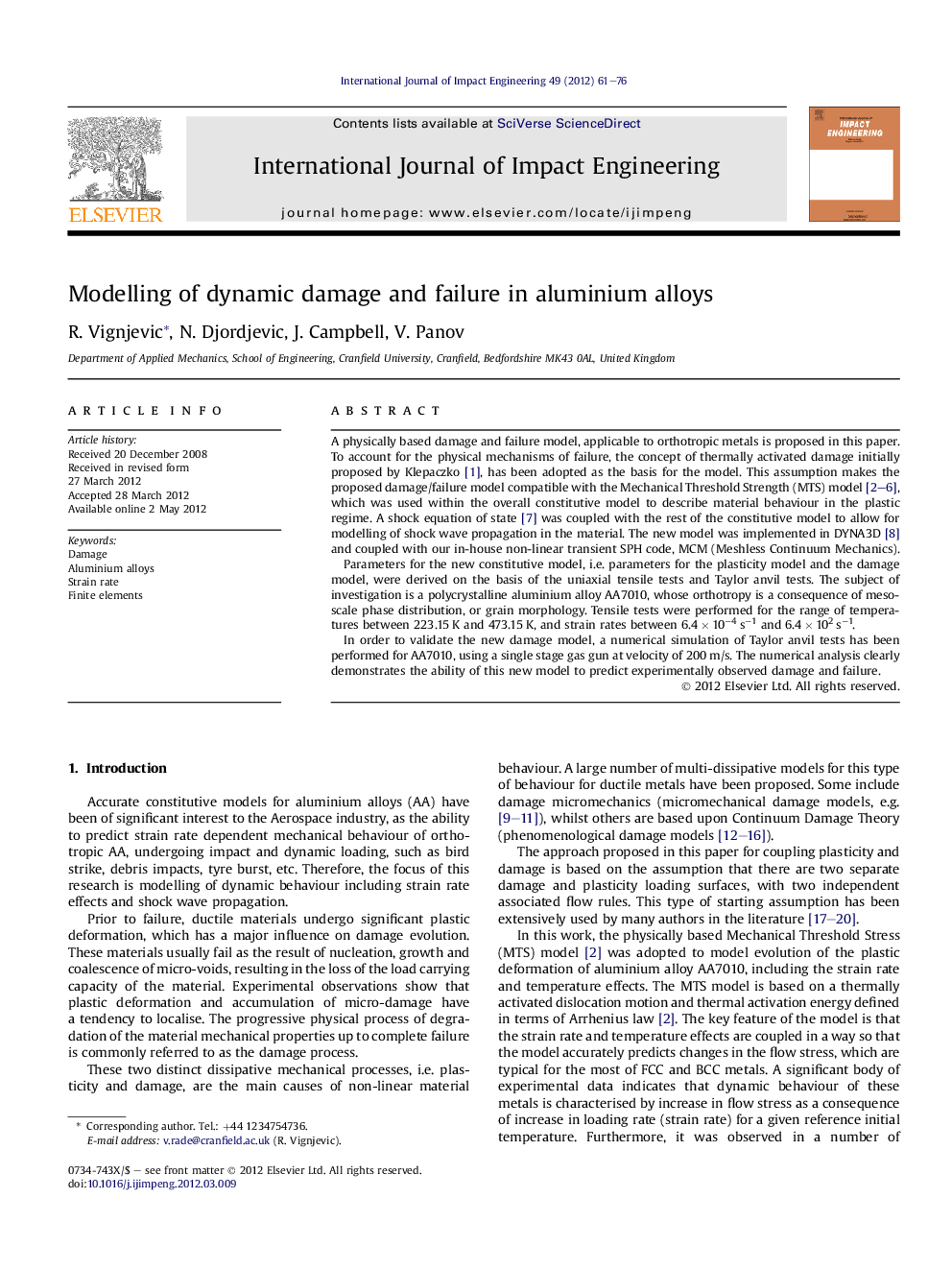| Article ID | Journal | Published Year | Pages | File Type |
|---|---|---|---|---|
| 783080 | International Journal of Impact Engineering | 2012 | 16 Pages |
A physically based damage and failure model, applicable to orthotropic metals is proposed in this paper. To account for the physical mechanisms of failure, the concept of thermally activated damage initially proposed by Klepaczko [1], has been adopted as the basis for the model. This assumption makes the proposed damage/failure model compatible with the Mechanical Threshold Strength (MTS) model [2], [3], [4], [5] and [6], which was used within the overall constitutive model to describe material behaviour in the plastic regime. A shock equation of state [7] was coupled with the rest of the constitutive model to allow for modelling of shock wave propagation in the material. The new model was implemented in DYNA3D [8] and coupled with our in-house non-linear transient SPH code, MCM (Meshless Continuum Mechanics).Parameters for the new constitutive model, i.e. parameters for the plasticity model and the damage model, were derived on the basis of the uniaxial tensile tests and Taylor anvil tests. The subject of investigation is a polycrystalline aluminium alloy AA7010, whose orthotropy is a consequence of meso-scale phase distribution, or grain morphology. Tensile tests were performed for the range of temperatures between 223.15 K and 473.15 K, and strain rates between 6.4 × 10−4 s−1 and 6.4 × 102 s−1.In order to validate the new damage model, a numerical simulation of Taylor anvil tests has been performed for AA7010, using a single stage gas gun at velocity of 200 m/s. The numerical analysis clearly demonstrates the ability of this new model to predict experimentally observed damage and failure.
